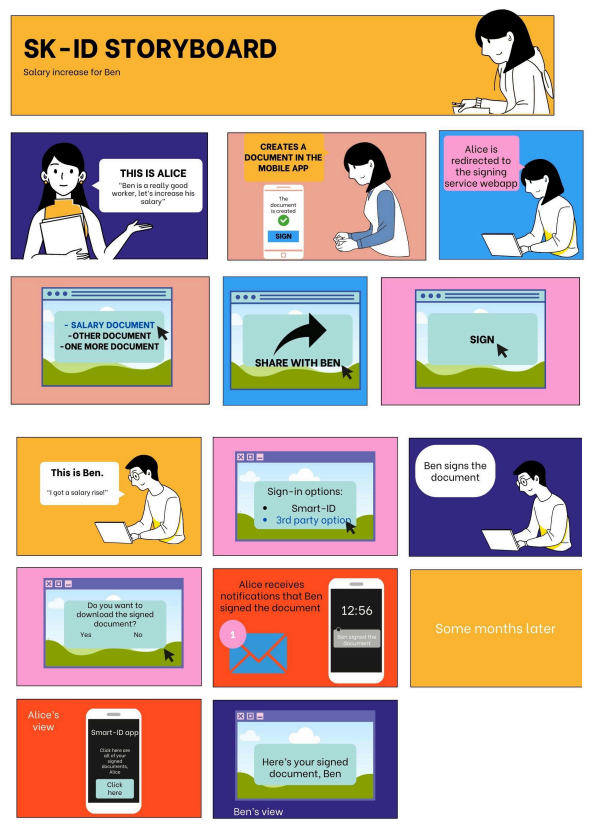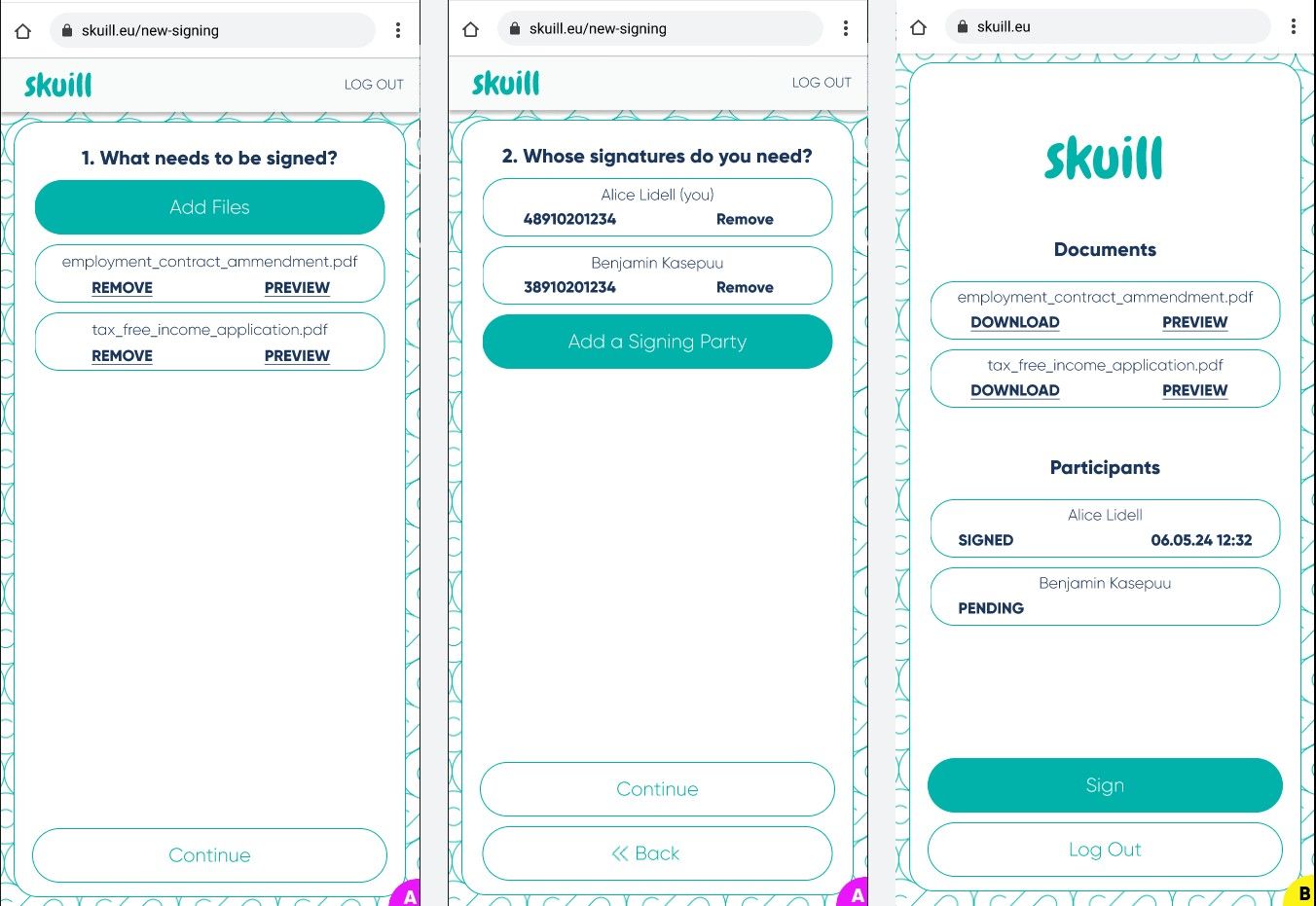Course: Digital Product Management Industry Project
Team SK ID: Kristiina Oksner (Master's in Computer Science), Xinyue Zhang (Master's in Computer Science), Azhar Kazakbaeva (Master's in Software Engineering), Abdul-Rasheed Olatunji Ottun (PhD in Computer Science), Rene Juuse (Digital Product Management micro-credential programme)
Semester: Spring 2024
The challenge
Estonia is one of the few countries that have a widespread ability to electronically sign independently from e-service providers. The software component in focus is the DigiDoc client and mainly its versions in iOS and Android. That is currently offered by the government and paid by taxpayers. SK operates in several other EU countries, providing signing tools. There is a recognized need for a tool that allows individuals to sign and validate their signatures.
However, the publicly available solution has limitations, such as restrictions on the number of signatures per month and the absence of a service level agreement (SLA) between the private sector and the state. This significantly limits its usefulness. Additionally, the current solution is outdated and lacks user-friendliness.
One potential direction, aligned with the team's focus and interests, is to create an alternative solution that offers an improved user experience and includes features to facilitate onboarding for corporate and retail customers.
Process and solution
To gain a deeper understanding of the problem, the SK ID team conducted market research to explore various signing solutions available globally. Additionally, team performed extensive user research with a diverse group of people to comprehend their goals, challenges, and needs. Based on the findings from this user research, the SK ID team developed two personas: Alice, a small business owner, and Ben, a regular worker.
Alice: Represents users who initiate the signing process. In this case, Alice is the owner of a cafe, and Ben is an employee who works there.
Ben: Represents the other party involved in the signing process. In this case, Ben received a salary increment contract and needs to sign.
Alice employs Ben and decides to give Ben a raise, this means that both Alice and Ben have to sign a new contract. Alice is the one who uses the app and is initiating the signing process.
These personas are derived from user research findings. Through interviews, surveys, direct observations, and feedback sessions, the SK ID team gathered comprehensive insights into the requirements and preferences of both employers and employees. This holistic approach ensures that the digital signing application addresses real user needs and provides a seamless, efficient solution for contract management.

Afterward, the SK ID team transitioned to formulating "How Might We" questions to help generate various solutions. They identified two key questions to focus on:
• How might we provide document storage?
• How might we support different eIDs for signing?
Using a range of brainstorming techniques, the SK ID team came up with numerous potential solutions. These ranged from "Creating plugins for existing file hosting services (like Google Workspace) to sign documents stored on their platform" to "Providing features that enable more internal business uses, such as approving expenses, requesting and signing off on duties, etc.".
In the end, the SK ID team proposed a signing solution called "skuill" that is:
- easy to use, intuitive, and user-friendly;
- has the file storage to save all the signed documents and access them anytime;
- supports numerous identification providers: Smart ID, Mobile ID and others.
The team completed several user testing rounds, allowing them to validate their solution and significantly improve user experience.
One of the key achievements was successfully integrating feedback from user testing into the prototype, resulting in a more intuitive and effective design. This accomplishment demonstrated our commitment to user-centered design which was a core goal of the project.
- Xinyue Zhang, Master's student in Computer Science
